Maya News Updates 2008, No. 5: Copan, Honduras - Infrared Analysis Technique Shows That Maya Used Mica In Paint (For Sparkling Effect )
On Wednesday January 23, 2008 the online edition of The Australian posted a report on the analysis of Maya paint fragments collected at the Rosalila structure, Copan, Honduras (in this case also late posting at MNU; I was in Bonn for research). The research, performed by Rosemary Goodall, involved an infrared analysis technique, FTIR-ATR spectral imaging, which showed that the paint fragments contained finely ground muscovite mica. The mica may lead to a sparkling or glittering effect of the painted surface (edited by MNU):
1500-year-old Mayan paint job peeled back - More secrets of the Mayan civilisation are being revealed via groundbreaking research into paint pigments used on a temple at one of the culture's most significant sites: Copan, in Honduras.
Brisbane physical and chemical sciences PhD student Rosemary Goodall used an infrared analysis technique, FTIR-ATR spectral imaging, never before applied in archeology. It revealed a map of the painted surfaces of stucco masks that adorn the corners of the Rosalila temple, built in about AD 550.
Mrs Goodall found that the Mayans mixed finely ground muscovite mica in their paint, which would have made parts of the building glitter in the sun. But visualising the buildings is only part of the brief for the former oil industry chemist, who is completing her doctorate jointly at the University of Queensland and the Queensland University of Technology.
"We need an idea of the paint technology and techniques and how the people were doing these things," Mrs Goodall said. This knowledge can allow deductions about the significance of the materials, some of which were used only for ceremonial purposes while others such as iron oxide were used to paint buildings.
By tunnelling into the ruins of Copan, the archelogists of the long-term UQ-led field research program uncovered multiple layers of buildings. They are studying materials from different periods to see if changes in materials could reveal cultural changes in the community.
"Once you know what the materials are made of, it aids you in conserving and restoring the site," Mrs Goodall said. This was of particular importance in tropical central America.
The advantage of FTIR-ATR spectral imaging was that while other techniques provided analysis of a microscopic area, it mapped a larger portion from which the recipe of paint could be more easily deduced.
Rosalila, which was in use for more than 100 years, was unearthed intact in 1989: a pyramid had been built over it. Mrs Goodall collected the paint fragments during a two-week site visit in 2005 and hoped to obtain funding to return for more samples (written by Jill Rowbotham; source The Austrailian - Higher Education Section).
Brisbane physical and chemical sciences PhD student Rosemary Goodall used an infrared analysis technique, FTIR-ATR spectral imaging, never before applied in archeology. It revealed a map of the painted surfaces of stucco masks that adorn the corners of the Rosalila temple, built in about AD 550.
Mrs Goodall found that the Mayans mixed finely ground muscovite mica in their paint, which would have made parts of the building glitter in the sun. But visualising the buildings is only part of the brief for the former oil industry chemist, who is completing her doctorate jointly at the University of Queensland and the Queensland University of Technology.
"We need an idea of the paint technology and techniques and how the people were doing these things," Mrs Goodall said. This knowledge can allow deductions about the significance of the materials, some of which were used only for ceremonial purposes while others such as iron oxide were used to paint buildings.
By tunnelling into the ruins of Copan, the archelogists of the long-term UQ-led field research program uncovered multiple layers of buildings. They are studying materials from different periods to see if changes in materials could reveal cultural changes in the community.
"Once you know what the materials are made of, it aids you in conserving and restoring the site," Mrs Goodall said. This was of particular importance in tropical central America.
The advantage of FTIR-ATR spectral imaging was that while other techniques provided analysis of a microscopic area, it mapped a larger portion from which the recipe of paint could be more easily deduced.
Rosalila, which was in use for more than 100 years, was unearthed intact in 1989: a pyramid had been built over it. Mrs Goodall collected the paint fragments during a two-week site visit in 2005 and hoped to obtain funding to return for more samples (written by Jill Rowbotham; source The Austrailian - Higher Education Section).
A comparable report was posted in the news section of the Queensland University of Technique, also on January 23, 2008 (edited by MNU):
QUT researcher discovers Maya mask splendour - Ancient Mayan temple builders discovered and used lustrous pigments to make their buildings dazzle in the daylight, a Queensland University of Technology researcher has discovered.
Studying tiny shards of paint from the Mayan city of Copan, QUT physical and chemical sciences PhD researcher Rosemary Goodall found evidence of mica that would have made the buildings glitter when hit by the sun.
Ms Goodall said the mica was applied over the red paint of stucco masks on the corners of Copan's well-preserved Rosalila temple, found buried under another pyramid. "The Rosalila would have been one of the highest buildings of the valley in its time, built by the Maya ruler to exhibit his power and impress his subjects," Ms Goodall said.
Using a novel analysis technique to examine tiny paint samples, Ms Goodall found two new pigments at the famous Maya archaeological and tourist site in Honduras, Central America.
"I discovered a green pigment and a mica pigment that would have had a lustrous effect," she said. "I'm sure that when the sun hit it, it must have sparkled. It must have had the most amazing appearance."
She said site of Copan was first populated in 1600 BC, but it wasn't until the cultural heyday of AD 400-800 that the Rosalila was built. Mystery surrounds the Maya people, who had largely disappeared by about AD 900. "I used an infrared analysis technique, called FTIR-ATR spectral imaging, which has not been used for archaeology before," she said.
"Using this technique and Raman spectroscopy I found the 'signature' of each mineral in paint samples only millimetres in size. "The Rosalila has more than 15 layers of paint and stucco. Knowing the mineral make-up of the pigments tells us what colours were painted on each layer.
"I also found the stucco changed over time. It became more refined and changed in colour from grey to white."
Ms Goodall said the Rosalila is a fine example of the Copan buildings, which were painted in red and white, with beautiful masks and carvings painted in multiple colours.
She said it the temple was coated in stucco then filled with rubble and a larger pyramid was built around it, keeping it brilliantly preserved inside.
"The next step of my research will be to take a portable Raman spectrometer to Copan to undertake more paint analysis," she said. "The research will help determine the best ways to conserve the Copan ruins - by understanding what's there, you can suggest ways to stop damage, and the tests do not destroy the samples."
Ms Goodall and her PhD supervisor Peter Fredericks are working in collaboration with Dr Jay Hall (University of Queensland) and Dr Rene Viel (Copan Formative Project, Honduras), who are directing the long-term UQ-led archaeological field research program at Copan (source QUT - News).
Studying tiny shards of paint from the Mayan city of Copan, QUT physical and chemical sciences PhD researcher Rosemary Goodall found evidence of mica that would have made the buildings glitter when hit by the sun.
Ms Goodall said the mica was applied over the red paint of stucco masks on the corners of Copan's well-preserved Rosalila temple, found buried under another pyramid. "The Rosalila would have been one of the highest buildings of the valley in its time, built by the Maya ruler to exhibit his power and impress his subjects," Ms Goodall said.
Using a novel analysis technique to examine tiny paint samples, Ms Goodall found two new pigments at the famous Maya archaeological and tourist site in Honduras, Central America.
"I discovered a green pigment and a mica pigment that would have had a lustrous effect," she said. "I'm sure that when the sun hit it, it must have sparkled. It must have had the most amazing appearance."
She said site of Copan was first populated in 1600 BC, but it wasn't until the cultural heyday of AD 400-800 that the Rosalila was built. Mystery surrounds the Maya people, who had largely disappeared by about AD 900. "I used an infrared analysis technique, called FTIR-ATR spectral imaging, which has not been used for archaeology before," she said.
"Using this technique and Raman spectroscopy I found the 'signature' of each mineral in paint samples only millimetres in size. "The Rosalila has more than 15 layers of paint and stucco. Knowing the mineral make-up of the pigments tells us what colours were painted on each layer.
"I also found the stucco changed over time. It became more refined and changed in colour from grey to white."
Ms Goodall said the Rosalila is a fine example of the Copan buildings, which were painted in red and white, with beautiful masks and carvings painted in multiple colours.
She said it the temple was coated in stucco then filled with rubble and a larger pyramid was built around it, keeping it brilliantly preserved inside.
"The next step of my research will be to take a portable Raman spectrometer to Copan to undertake more paint analysis," she said. "The research will help determine the best ways to conserve the Copan ruins - by understanding what's there, you can suggest ways to stop damage, and the tests do not destroy the samples."
Ms Goodall and her PhD supervisor Peter Fredericks are working in collaboration with Dr Jay Hall (University of Queensland) and Dr Rene Viel (Copan Formative Project, Honduras), who are directing the long-term UQ-led archaeological field research program at Copan (source QUT - News).
In a January 24 comment on Aztlan (hosted by the Foundation for the Advancement of Mesoamerican Studies, Inc.) on one of these articles Elin Danien noted that the use of mica has been identified previously in the Maya area, as noted in a FAMSI report by Lynn Grant (citing research at the Yucatecan site of Chac II) and noted by Elizabeth Graham in regard to its presence at Structure N10-28 in Lamanai, Belize.







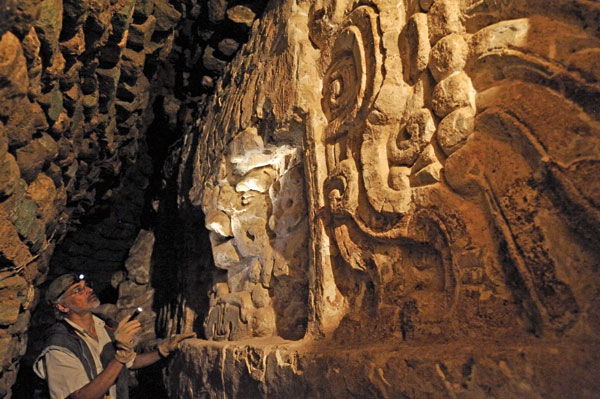
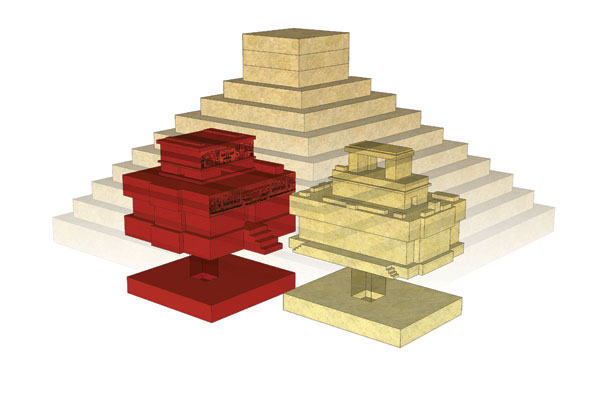
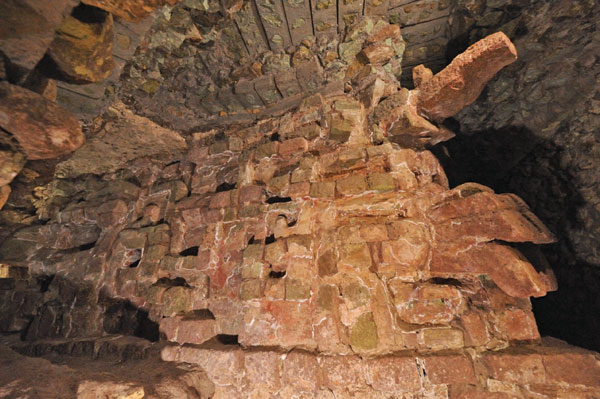





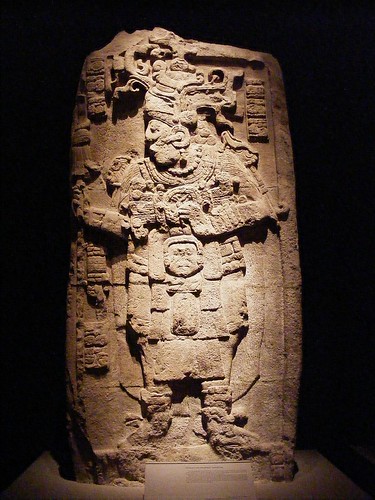


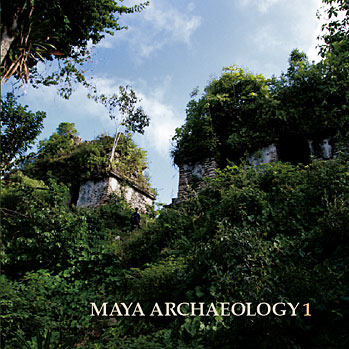









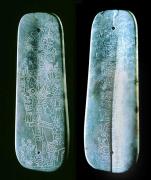
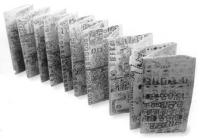

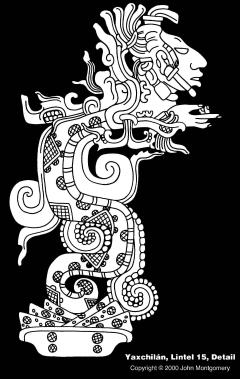

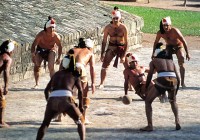


0 Comments:
Post a Comment
<< Home